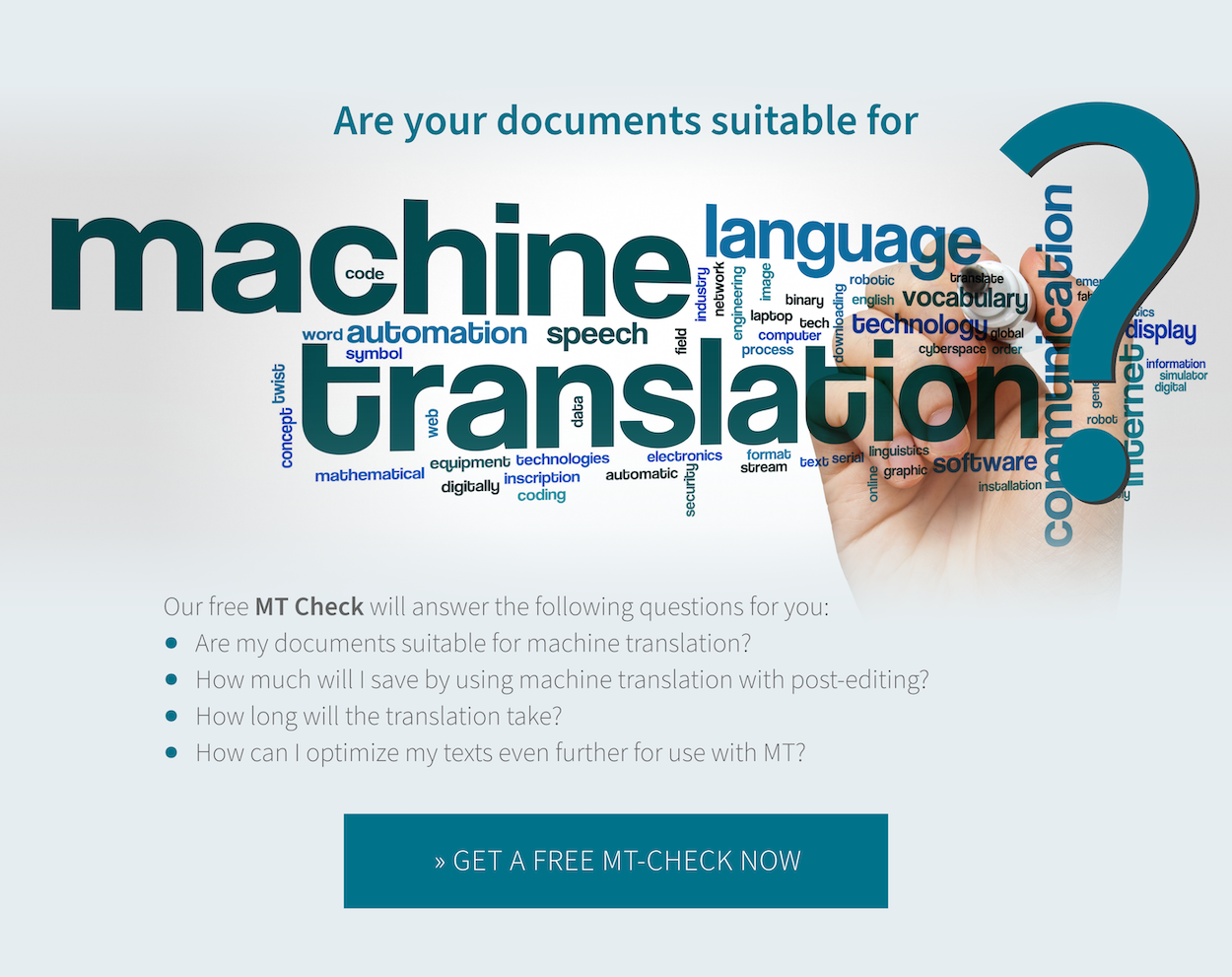
Lots of businesses want to exploit machine translation to reduce the cost of their projects and the time taken to deliver them. But before making the switch, there are a few questions to think about, and processes and workflows to prepare, in order to ensure that the quality of your translations doesn’t suffer and you actually save money from it.
The main reasons for switching to machine translation (MT) and post-editing are the potential savings of 30% and the shorter project delivery time, which enables a quicker time-to-market for new products. But before you get carried away and immediately switch over, whether for in-house translations or when ordering translations from your agency, you should take a look at your individual circumstances. Otherwise you could be in for a rude awakening as you wonder why the translations you’re getting are so bad, or why using MT doesn’t actually save you anything like as much time and money as you thought.
Analyse how your translations are currently managed
A bit of preparation is often required to ensure machine translation delivers the same high-quality results along with improved value for money. So we recommend closely analysing the current translation management situation at your business before you give machine translation the green light. If there are a few areas in need of improvement, for example translation memories which need tidying up or an inadequate terminology management system, you should focus on making your human translations as professional as possible first. If translation memories contain lots of poor or inconsistent translations (and new translations of documents are always produced using existing translation memories at first), and then you decide to use machine translation, the inevitable result will be chaos which gives you worse translations.
You should only consider using machine translation and post-editing once you’re on solid ground and these processes run as smoothly as possible. Because MT isn’t a “magic bullet” that can fix the problems in your translation management, big or small – you might get cheaper translations in the short term, but over time you won’t get the high-quality texts you need and you won’t save money either.
Carry out a risk assessment
You should also carry out a risk assessment before using machine translation. Because there are a few things that can go wrong with translations, and with machine translation in particular, so there’s a higher risk of errors which could result in damage. For all external documentation which is professionally translated, machine translation should only be used in conjunction with post-editing. The higher the risk, the more people should be involved: for example, an additional review may be required in order to reduce the risk even further, depending on the subject matter. Although this will increase your costs slightly, it will make things safer for you and the users of your products.
Analyse your content before getting it translated
You should also analyse your content, because some types of text aren’t suitable for machine translation (see our text check to find out more). Essentially, the more creative a text, and the less context it has, the less suitable it will be for MT. So if you need to get various types of text translated for your business, classifying your texts and adopting a hybrid approach may help. Remember: if you decide to use machine translation, that doesn’t mean you have to use it for all your texts. A good way to figure out which texts are suitable for MT is to consult your translation agency – in our experience, technical documentation works well with machine translation and post-editing, while marketing materials such as brochures and website texts work better with human translation.
But rather than just looking at the types of text, you should also analyse the quality of your source texts. Some technical documents are written so that they’re suitable for machine translation, but others aren’t. An MT engine will only deliver usable results if the source text is well-written, so you should make sure your texts are all written by native speakers. A human translator can make sense of strange sentence constructions, but machine translation engines can’t, and there’ll be so much post-editing required that in the end you don’t save any time or money.
Make sure your translation resources are well-maintained
As mentioned above, your translation memories and term bases should be well-maintained in order to avoid messy translations. This is especially important if you want to use machine translation software that can be trained: if it’s “fed” translations that are inconsistent and/or poor and/or outdated, the output will be the same. And that goes for terminology too: if you’re using an MT engine that can take terminology into account, you need to manage your term base properly. Contradictory terms and duplicate entries will inevitably result in inconsistent translations. So before proceeding with machine translation, check your translation memories and term bases.
Do it yourself, or ask an agency to help?
Another question is whether to use machine translation in-house or in partnership with a translation agency. Either way, don’t forget to keep your data secure! If you use free MT engines, your data are no longer confidential, so you should only ever use fee-based Pro versions of MT software. If you’re planning to use MT in your in-house translation department, think about the resources you’ll need. The person carrying out professional post-editing should always be a native speaker of the language in question and should know what’s important in post-editing.
If you’re planning to order machine translation and post-editing from a translation agency, checking whether they’re certified to ISO 18587, the standard for post-editing machine translations, is a good place to start.
Think about reporting
One more top tip to finish. If you want to use machine translation, you probably have one main goal in mind: saving money. To measure whether or not you actually do that, you’ll need to produce reports – they’re the only objective way to assess the benefits of machine translation for your business.
In short, to ensure your expectations are met when switching to machine translation and post-editing, you need to think it through in advance and ensure that you’re on solid foundations – i.e. that you have a good translation management system in place for human translations first. Once you’ve resolved all the issues, there’s nothing to stop you exploiting the quicker delivery times and lower costs associated with machine translation.
Main image: © Adobe Stock


